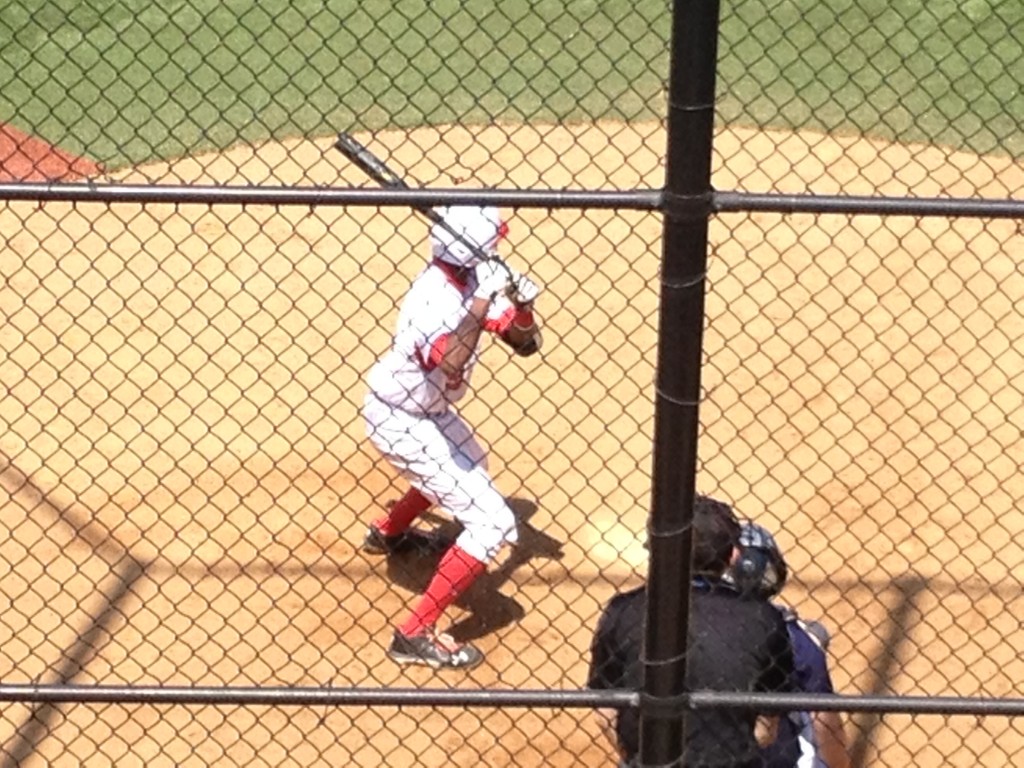After a somewhat sluggish start to the season, the Nationals have turned things around, winning eight of their last twelve games and are amidst a 10-game west coast road trip to challenge the Dodgers, Padres, and Giants before returning home late next week. The Nationals took the first game of their three game series against the Dodgers Monday evening, but faced an extremely difficult task Tuesday evening as the Dodgers Clayton Kershaw, the 2011 NL Cy Young award winner and 2012 runner-up, was taking the mound for Los Angeles.
To digress a bit, initially I intended for this piece to be an examination of how Kershaw would pitch Bryce Harper, as the precocious phenoms have never faced each other in a major league game. Unfortunately Harper had a gruesome collision with the right field wall during Monday’s game, so manager Davey Johnson gave him a day off to recover. This caused a slight audible to my plan.
Nevertheless, considering Kershaw is possibly the best pitcher in the National League, and certainly one of the best five starting pitchers in baseball, I did not want to miss the opportunity to scrutinize his start against the Nationals and observe how he would attack the struggling Nationals lineup, which has scored only 41 runs in their first 11 games this month.
****
Despite struggling in the first inning, facing six batters and throwing 29 total pitches, Kershaw escaped the first inning without allowing a run, then proceeded to overwhelm the Nationals in route to pitching 8.2 shutout innings, before giving way to the bullpen for the save. For the evening, Kershaw allowed no runs on 5 hits (only 3 after the 1st inning) and 1 walk against 11 strikeouts. In short, Kershaw completely dominated an at times overmatched Nationals lineup.
Due to his difficult 29-pitch first inning, Kershaw was forced to throw 132 total pitches in Tuesday night’s 8.2 inning effort against the Nationals, of which 96 were strikes against only 36 balls. By my numbers, I had Kershaw throwing 72 total fastballs (54.5%), 35 sliders (26.5%), 21 curveballs (15.9%), and only 4 changeups (3.1%). His fastball velocity was quite impressive, averaging 93.67mph for the evening and topping out at 95.48mph, which in addition to his impressive fastball command, allowed him to throw first-pitch strikes to 22 of 32 Nationals hitters (68.75%). (Thanks BrooksBaseball.net) Finally, Kershaw induced 18 pure swings-and-misses, an incredible 13.6% of his pitches, and in particular, drew 7 whiffs on his 21 curveballs thrown. Kershaw consistently got ahead of the hitters then baffled them with his devastating off-speed stuff.
The Nationals lineup Tuesday evening was not at full strength with the injuries to Harper and Jayson Werth, and an off-day for Denard Span. To counteract the tough left-handed pitching Kershaw and help improve their chances for success, Davey Johnson featured a heavy right-handed hitting lineup with only one left-handed batter, Adam LaRoche. Unfortunately even trying to exploit a potential platoon advantage against the lefty, Kershaw’s results and success highlights the problems currently hindering the Nationals lineup – Too few walks and baserunners combined with far too many strikeouts causing the lineup not to score runs.
For the season the Nationals are currently 22nd in total walks, 6th in total strikeouts, 28th in team on-base percentage at .292, and 28th in OPS (On-Base Plus Slugging) at .661. In just the month of May, the Nationals have scored 41 runs in 12 games, with 6 home runs (Last in MLB), 32 walks (21st in MLB), 110 strikeouts (6th in MLB), a .283 OBP (28th in MLB), and a .605 OPS (Last in MLB and .15 behind the lowly Houston Astros). This is in contrast with the Nationals statistics from last season, when they finished 17th in walks, 4th in strikeouts, 12th in OBP, and 8th in OPS. The Nationals have a winning record, 8-4 in May, because the pitching staff has the best ERA in baseball and has allowed the fewest number of runs this month.
While the Nationals are built around their excellent starting pitching and deep bullpen, the team will not reach the success everyone expects from them if their lineup does not show notable improvements at the plate going forward. Naturally these numbers should rally when Harper and Werth return to the lineup and Ryan Zimmerman and LaRoche’s statistics begin to resemble their career averages. However, if the Nationals continue to fail to get runners on base, and avoid making quality contact, the team will struggle to return to the playoffs this season.

